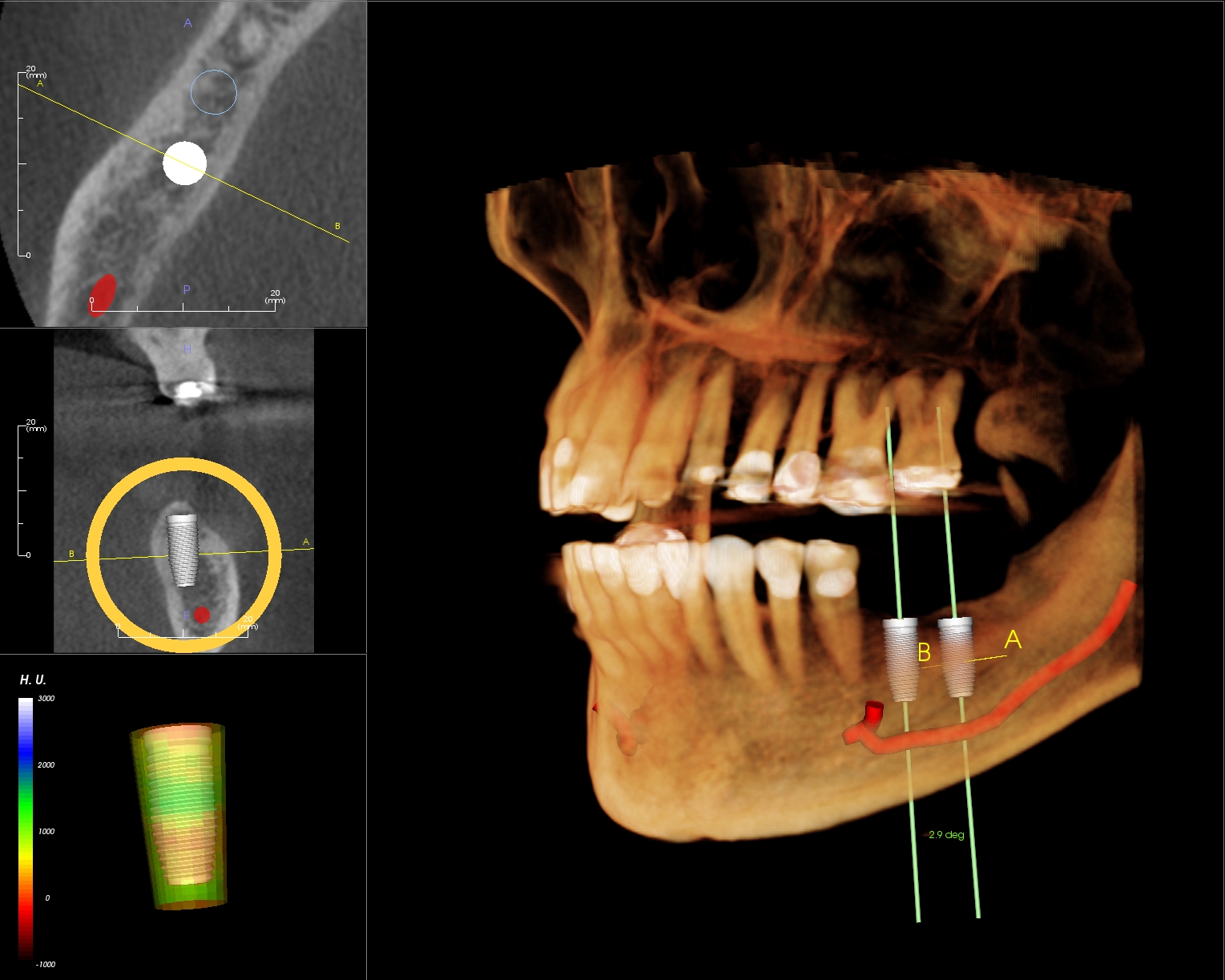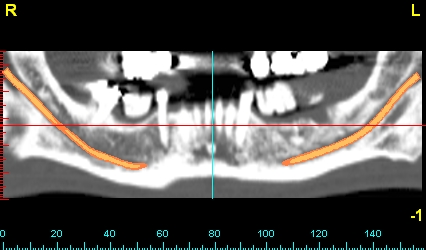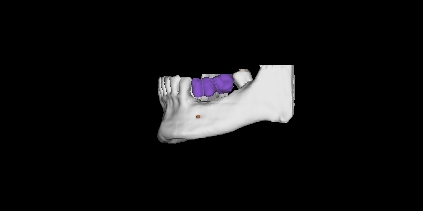In order to place an implant in the patient's jaw, we need to assess several criteria at the location of the planned implant. Some of the important factors may include: 1. The patient's bone height
2. The patient's bone width
3. The proximity to the nerves in the lower jaw
4. The proximity of the sinus cavity in the upper jaw
Using a 3D Cone Beam Scan (CT Scan) we can precisely analyze all of the above criteria and predetermine the exact size and location of the implant prior to the surgical placement.
Here is a screen capture of the planning process for two implants to replace two missing molars in our actual patient's lower jaw. The red line below the two planned implants is a nerve in the lower jaw. That nerve is often the limiting factor in the lower jaw where some implants for posterior teeth may be needed.
Proper use of technology helps ensure optimum results and safety of dental implant treatment.
........................................................................................
Alex Nguyen, DDS is a Saratoga Dentist who practices General Dentistry, Cosmetic, and Implant Dentistry. For over 20 years the practice has been serving the residents of Santa Clara County and San Francisco Bay Area.






